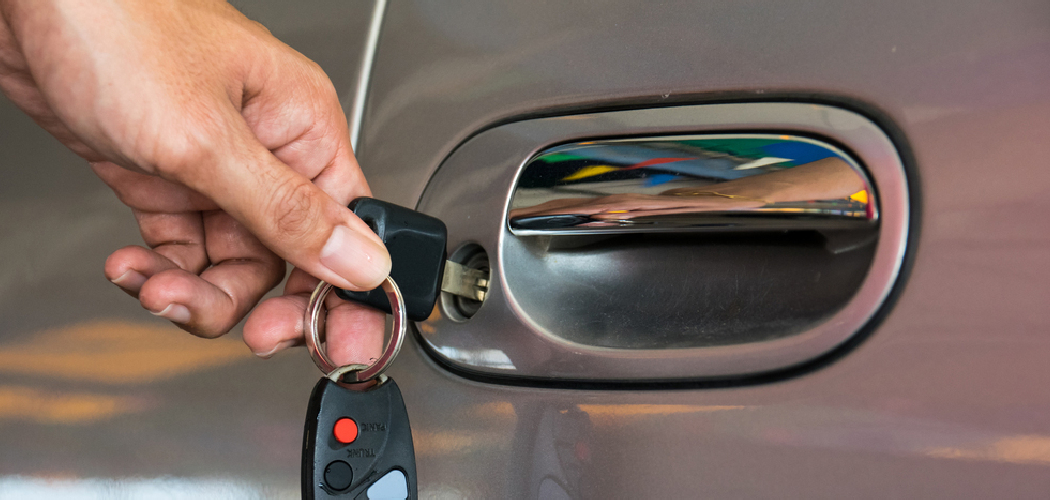Rekeying a car involves adjusting the internal components of the vehicle’s locks and ignition so that they work with a new key. This process is essential for maintaining the car’s security and can be necessary for various reasons. For instance, a car owner may need to rekey their vehicle if they have lost their keys, purchased a used vehicle, or wish to improve security after a theft.
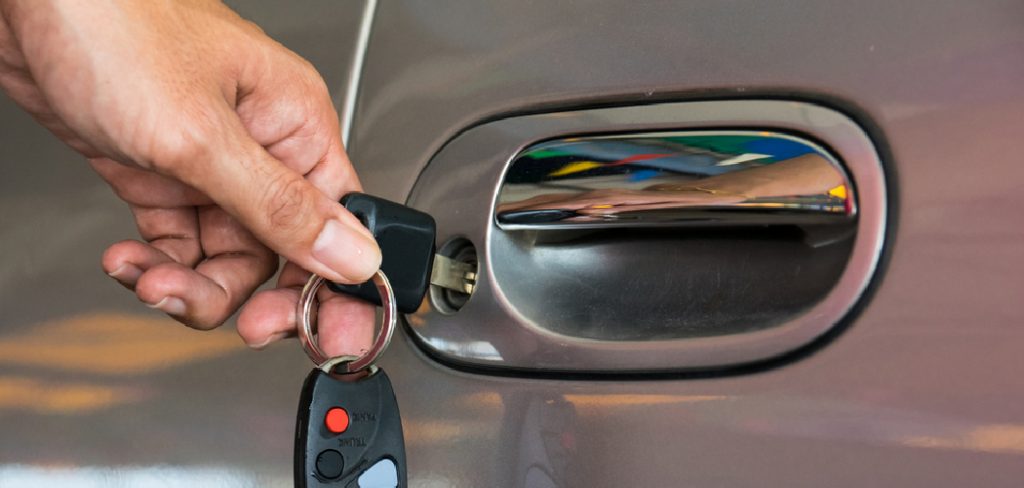
Understanding how to rekey a car is crucial, as it differs from outright replacing the locks or ignition system. Instead, rekeying modifies the existing mechanisms, allowing them to adapt to a different key without the need for a more costly replacement. This method efficiently restores access control and enhances the security of the vehicle.
Understanding Car Rekeying
What Does Rekeying Mean for a Car?
Rekeying a car is a process that involves altering the tumblers or wafers within the lock cylinder to correspond to a new key. Each car lock comprises these small components, which are integral to the lock’s internal mechanism. When a key is inserted, its grooves align with these tumblers or wafers, allowing the lock to turn and granting access.
Rekeying changes the alignment of these components, rendering the original key obsolete while preserving the existing lock and ignition hardware. This means you won’t need to overhaul the entire lock system—rekeying simply modifies the parts already in place to operate with a different key.

When Should You Rekey Your Car?
Rekeying your car becomes necessary in several scenarios. If you have lost your keys or fear they might be in the wrong hands, rekeying is a prudent step to prevent unauthorized access to your vehicle. Similarly, rekeying the locks after purchasing a used car ensures no previous owner or unknown individual retains access, enhancing your personal security. In cases where a theft or attempted theft has occurred, and the key was stolen or compromised, rekeying safeguards the integrity of vehicle access.
Rekeying vs. Replacing the Lock
Rekeying tends to be more affordable and less invasive than replacing the entire lock system. This process allows you to maintain the original locks while achieving new key functionality, making it a cost-effective option. Rekeying is less labor-intensive, as it does not require removing and reinstalling entire lock assemblies. It’s generally recommended to rekey both the locks and ignition in tandem to ensure that the new key operates seamlessly across both systems.
This consistency not only provides ease of use but also heightens the vehicle’s overall security, as one key effectively manages all access points. Hence, rekeying stands out as a practical choice when altering vehicle access without the extensive expense of a complete lock replacement.
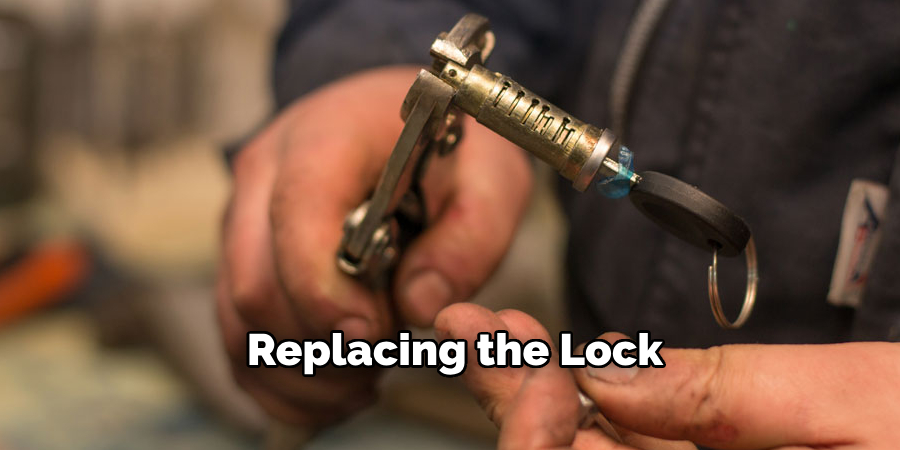
Tools and Materials Needed
Basic Tools
To successfully rekey a car, you will need a specific set of tools and materials designed to facilitate the process. Start with a new key set or a blank key that is compatible with your car model. This key will be cut or adjusted to work with your rekeyed locks.
A rekeying kit or lock cylinder kit tailored to your car’s make and model is essential, as it contains the necessary components for adjusting the internal mechanisms of your locks and ignition. Basic hand tools such as screwdrivers and pliers are required to disassemble the locks and ignition. Tweezers or small picks are also useful for adjusting tumblers or wafers during rekeying.
Specialized Tools (Optional)
Consider using specialized tools for a more streamlined rekeying experience. A key code, if available, can significantly aid the accuracy of key cutting or rekeying. Consulting your car’s manual or a vehicle-specific guide provides crucial disassembly instructions, helping you navigate the intricacies of your car’s lock and ignition systems.
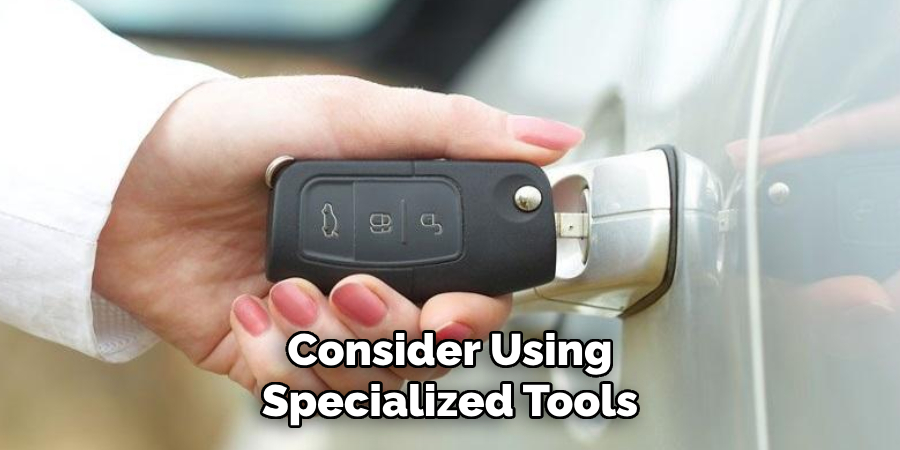
Safety Considerations
Prioritize safety by working in a well-lit, clean environment to prevent losing any small parts. Wearing gloves is advisable to protect your skin from contact with lubricants or metal shavings that could occur during the rekeying process. These precautions ensure a safer and more efficient rekeying experience.
How to Rekey a Car: Step-by-Step Guide
Step 1: Remove the Door Lock Cylinder
Begin by removing the door panel to access the lock cylinder. This process typically involves unscrewing the fasteners or screws that secure the panel to the door frame. Carefully pry off the panel, using a panel remover tool if necessary to avoid damage. Once the panel is removed, locate the lock cylinder linkage and disconnect it. Most car doors use a screws or clip to secure the lock, so carefully remove these to release the lock cylinder. Gently extract the lock cylinder from the door, ensuring you do not damage any nearby components.
Step 2: Disassemble the Lock Cylinder
Inspect the interior components with the lock cylinder out, specifically the wafers or tumblers that need rekeying. Utilize a key blank or your current key to turn the lock slightly, allowing the cylinder’s housing to be removed. This step may require a degree of precision, so take your time to avoid misalignment. Use a small pick or tool provided in the rekeying kit to carefully lift the tumblers. Take note of the existing arrangement as a reference when inserting new tumblers.
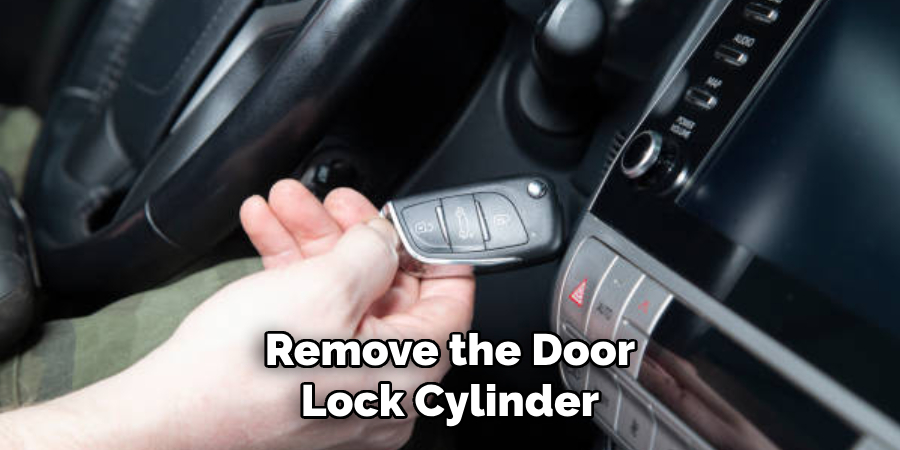
Step 3: Replace the Tumblers
Position the new key as your guide, and replace the lock cylinder’s tumblers to match the new key’s pattern. The rekeying kit will supply you with wafers or tumblers of various sizes. Carefully install each tumbler into the appropriate slot, ensuring they settle flush with the lock cylinder when the new key is inserted. Confirm that each tumbler moves freely and engages properly with the new key configuration.
Step 4: Reassemble the Lock Cylinder
After replacing the tumblers, reassemble the lock cylinder. Insert it back into the door, reconnecting the linkage securely. Reattach any clips or screws that hold the lock in place. Before reinstalling the door panel, test the lock to ensure it functions smoothly with the new key. Verify that the lock operates freely without any sticking or resistance. Once confirmed, reattach the door panel, making sure it’s secured properly.
Step 5: Rekey the Ignition (Optional)
If you choose to rekey the ignition system as well, note that the procedure follows a similar approach but with increased complexity due to the ignition’s additional components. Begin by removing the steering column covers to access the ignition lock cylinder. Turn the ignition key to the “on” position, which releases the ignition lock cylinder. Follow the same rekeying steps: swap out the old tumblers for those matching the new key design. Take extra caution during this step, as ignition systems can be delicate.
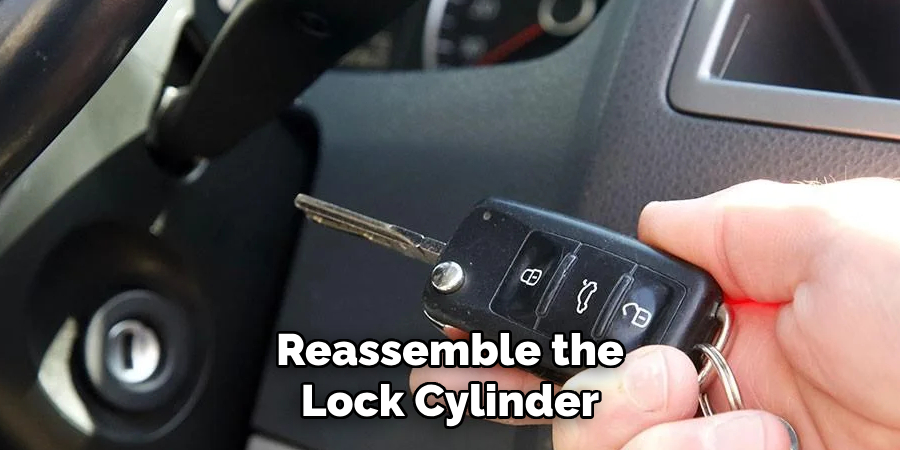
Step 6: Test the New Key
Upon completing reassembly, test the new key in both the door locks and ignition to ensure flawless operation. Insert the new key, check for smooth insertion, and turn in all rekeyed components. The key should unlock, lock, and start the vehicle without any issues. If any problems arise during testing, revisit the rekeying process to verify tumbler placement and lock cylinder alignment. Successfully conducting this test confirms the rekeying procedure’s success and secures your vehicle’s access controls.
Costs Involved in Rekeying a Car
DIY Rekeying
Rekeying your car yourself can be cost-effective, but it demands both time and the correct tools. A rekeying kit, essential for adjusting the lock mechanisms, typically ranges from $30 to $100, depending on your car’s make and model. Additionally, if you opt to have the new key professionally cut to ensure precision, this service might cost an extra $10 to $50. While DIY rekeying allows flexibility and reduces labor costs, it requires careful attention to detail to avoid any issues with the locks or ignition system.
Professional Rekeying
Enlisting the services of a professional locksmith to rekey your car is generally more costly but offers the assurance of a flawlessly executed job. Professional locksmiths generally charge between $75 to $200, taking into account the complexity of the car’s locks and whether the rekeying includes both door locks and the ignition system. This option is ideal for those seeking peace of mind and wishing to avoid the intricacies of the rekeying process.
Dealership Costs
Dealerships also provide rekeying services, albeit at a higher price than independent locksmiths. The costs with dealerships can vary widely, ranging from $150 to $400 based on the brand of the car and its security features. While more expensive, using a dealership might be preferable for newer vehicles under warranty or if the car has advanced security systems that require specialist knowledge.
Other Costs
Additional expenses may arise, such as travel fees for mobile locksmith services, which can add to the overall rekeying cost, especially if the service is required at a specific location. Furthermore, charges can increase if emergency rekeying services are necessary outside of regular business hours. Considering these potential costs is prudent when deciding the most suitable rekeying method for your needs.
Pros and Cons of Rekeying Your Car
Pros
Rekeying offers a cost-effective way to ensure your car’s security without replacing the entire lock system. This process allows you to maintain the vehicle’s original locks and ignition, preserving both its look and functionality. Additionally, rekeying is a relatively quick task, especially for experienced locksmiths who can perform the job efficiently. By simply adjusting the components within the lock cylinder, you achieve renewed security with minimal alteration to your car.
Cons
However, there are certain drawbacks to consider. DIY rekeying can be challenging if you don’t have experience working with locks, as it requires precision and attention to detail. Mistakes during the process could lead to malfunctioning locks or ignition issues, which might necessitate professional intervention.
Furthermore, reworking certain newer cars equipped with advanced electronic security systems or smart keys may not be possible, necessitating alternative security solutions. While rekeying only changes the key, if the locks themselves are damaged or worn, they may still require replacement in the near future, thus only temporarily addressing the security concern.
Conclusion
Rekeying your car is an effective measure for enhancing security and convenience. By replacing the internal components of your vehicle’s lock cylinder, you can ensure that old keys no longer grant access, significantly reducing the risk of unauthorized entry. Whether you have lost your keys or recently acquired a used car, knowing how to rekey a car is invaluable in protecting your investment.
While the DIY route can be a budget-friendly option for those equipped with the necessary tools and expertise, professional locksmiths provide a swift and reliable service, ensuring your rekeying process is executed flawlessly. Investing in professional rekeying services also offers peace of mind, particularly for complex systems in modern vehicles. Ultimately, rekeying stands as a smart choice to maintain control over your vehicle’s security, safeguarding it against potential threats.

